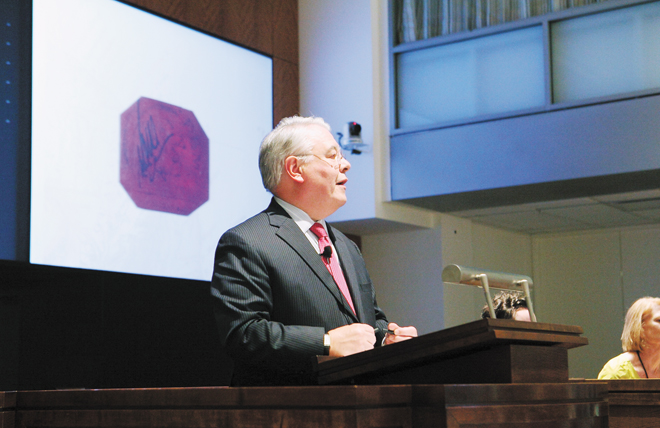Until recently, stamp auctions have pretty much been the same for the last 100 years.
The scene would have been familiar to a collector from the 1920s. Rows of bidders sat in a room facing an auctioneer, who opened to either a reserve bid or mail bids received in advance. Prospective purchasers unable to attend sent an agent, or telephoned in their bids. The telephone bid was probably the only thing a collector from the early days of stamp collecting would not have recognized.
All that changed when the use of high speed Internet became commonplace. Collectors were quick to utilize the new tool. Today a collector can sit at home and view, and even bid on stamps without even having to put on a pair of shoes.
At first, it seemed that sites such as eBay, where auctions are dragged out and dealers put up a continuous flow of new material, would dominate. But the use of high speed and interactive software meant that auctions could be conducted in real time, and that’s when the major auction firms got interested. For the auctioneer, the benefits are obvious. The ease of accessing a sale online means that there are more potential bidders, which means more potential buyers. Today it isn’t uncommon to see a significant percentage of lots sell to online bidders.
It also isn’t uncommon to see a lot fewer faces in the auction room. Just prior to Sotheby’s sale of the British Guiana one-cent magenta, several observers offered online comments such as “grab a seat there will be plenty here,” and “the media almost outnumber the bidders.”
Sotheby’s was also offering the sale online, with many more people watching the auction through their computers rather than making the trek to New York City. On the downside, some bidders complain that live Internet bidding can slow down an auction, and cause delays if the technology is not well implemented.
At a recent sale in Toronto, Ron Brigham rented two meeting rooms in a Toronto hotel. “Look at this,” he said gesturing to a room with less a dozen bidders. “I don’t need all this for this many people. Next time I’m going to go somewhere smaller,” he adds. “All I need is a small room and Internet access.” John Sheffield, a dealer and auctioneer agrees that online bidding, while it attracts more bidders, can reduce attendance. “I think that those people who include live Internet bidding, in all likelihood won’t have as much of a floor because the guys stay at home and bid.” Sheffield himself does not offer live bidding, but he points out there are several more dramatic ways the auction business has been changed.
“Technology has not only impacted how people bid, but when they can bid,” he said. Sheffield said that there was a time when bidders would receive a catalogue and if they did not plan on attending they would have to fill out the mail bid and return it as quick as possible, because they wanted to be first in the case of a tie. He said now the majority of bids he receives comes through his website in the last 36 hours before the sale. Bidders cannot only take time to think about the bid, but they are able to see activity up to that date and get a good idea of the opening bid. “In the old days if they wanted to know the opening bid they had to make the telephone call or go to the auction.”
He also points out that the Internet, and its speed of communication, makes it much easier for collectors to participate in sales in other parts of the world.
“Search engines have made it easier for people to find stamps, and stamp auctions,” he said. “I look at where my customers come from and they are all over the place, and this has increased dramatically in recent years. Search engines have made it easier for buyers and sellers to connect.” Today, the gathering place for many online auctions is www.stampauctionnetwork.com, a website where it seems there is always an auction going on, or about to take place. A typical day can see as many as three auctions taking place, with several more coming up. The site supports both live bidding and mail bid sales. The Internet has made Marshall McLuhan’s global village a reality. Bidders can check out sales in North America during daylight hours, or get up early for European sales.

